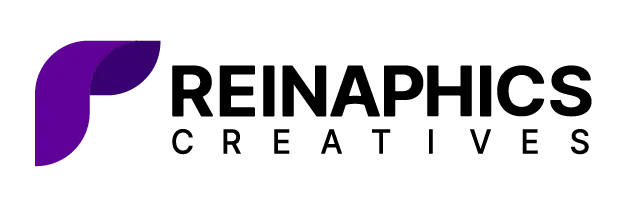E-commerce has become an integral part of the retail industry. As more consumers shift their shopping habits online, the importance of creating visually appealing yet highly functional e-commerce website designs has become paramount. Striking the right balance between aesthetics and functionality is a key challenge for web designers and business owners alike.
Inside this article,
What are the dual imperatives of e-commerce website design?
Defining aesthetics in the context of web design goes beyond surface-level appeal. It encompasses the strategic use of color, typography, imagery, and layout to create an immersive and memorable shopping experience. Aesthetics shape the first impression, elicit emotional responses, and guide the user’s eye through the online storefront.
Functionality, on the other hand, is the backbone of a thriving modern e-commerce operation. This includes intuitive navigation, efficient product search, clear categorization, a seamless checkout process, and responsive mobile design. Functionality directly impacts the user experience, conversion rates, and the overall viability of the online business.
Achieving the right balance between these dual imperatives is the holy grail of e-commerce web design. When done well, the aesthetics draw the user in and the functionality keeps them engaged, leading to increased sales and brand loyalty. When done poorly, a visually stunning but clunky website will struggle to attract and retain customers.
The psychology of visual design in e-commerce
Understanding the psychological impact of visual design elements is crucial for e-commerce success. Color theory, for instance, plays a significant role in consumer behavior. Warm tones like red and orange evoke a sense of urgency and excitement, while cool blues and greens exude a sense of trust and tranquility.
Strategically incorporating these color associations can influence impulse purchases and user confidence. Similarly, typography choices can impact readability and brand personality. Elegant, serif fonts convey sophistication, while sans-serif typefaces project a modern, clean aesthetic.
Ensuring optimal font size, line spacing, and hierarchy helps guide the user’s eye and enhance the overall shopping experience. The strategic use of white space, visual hierarchy, and layout further contributes to the aesthetics of an e-commerce website. Uncluttered designs with clear focal points and intuitive flow minimize cognitive load and enhance usability.
Also read: 10 Graphic design principles every designer should know
What are some functional requirements of e-commerce websites?
Regardless of the aesthetic appeal, an e-commerce website must deliver on fundamental functional requirements to succeed. Intuitive navigation and site structure allow users to quickly find what they’re looking for. Robust search functionality, comprehensive product categorization, and effective filtering tools empower customers to narrow down their options efficiently.
The checkout process is a critical juncture where functionality takes precedence. A streamlined, mobile-responsive checkout flow, with clear progress indicators and security assurances, can make the difference between a completed sale and an abandoned cart.
Ensuring cross-device compatibility and optimizing for performance, such as fast loading times and efficient image delivery, are also essential functional considerations. Balancing rich media content with technical constraints is a delicate dance that can significantly impact the user experience.
How do you nail your product presentation?
The way products are presented online is where aesthetics and functionality intersect most visibly. High-quality product photography, 360-degree views, and video demonstrations captivate the user and build trust in the offering. However, these visual elements must be carefully balanced with loading speed and overall site performance to avoid frustrating the customer.
Effective product information architecture, with clear categorization, intuitive navigation, and comprehensive yet concise details, allows customers to make informed purchasing decisions. Striking the right balance between aesthetically pleasing presentations and functionality-driven information architecture is a key driver of e-commerce success.
Also read: Visual merchandising in e-commerce websites to enhance online brand experiences
User experience (UX) design principles and performance optimization
Incorporating sound UX design principles is essential for creating e-commerce websites that are both aesthetically pleasing and highly functional. This includes maintaining consistency in design elements, using clear and persuasive messaging, ensuring accessibility for all users, and implementing personalization features that enhance the shopping experience.
While often overlooked, the performance optimization of an e-commerce website is a crucial aspect of its functionality. Site speed and loading times can have a significant impact on user experience and conversion rates. Web designers must find ways to optimize images, leverage lazy loading, and balance rich media content with performance considerations to create a fast and responsive online shopping environment.
Navigation and information architecture
Effective navigation and information architecture are fundamental to the functionality of an e-commerce website. This includes designing intuitive menu structures, implementing breadcrumbs and search functionality, and balancing product information with clean, uncluttered design. By prioritizing usability, web designers can create an e-commerce experience that is both aesthetically pleasing and highly navigable.
How can you streamline the checkout process?
The checkout process is a critical juncture in the e-commerce customer journey, where aesthetics and functionality must work in perfect harmony. Web designers must create a visually appealing yet efficient cart page, simplify form design without sacrificing necessary information, and implement progress indicators and visual feedback to guide the user through the purchase process. Balancing security features with user-friendly design is also a key consideration.
Ethical considerations in e-commerce design
As e-commerce continues to evolve, web designers must consider the ethical implications of their work. This includes:
- Balancing persuasive design techniques with user autonomy – Designers should be mindful of using dark patterns or other manipulative tactics that undermine a user’s ability to make independent purchasing decisions.
- Ensuring transparency in pricing and product information – All relevant details about pricing, fees, and product specifications should be clearly communicated to customers.
- Designing for inclusivity and accessibility – The website should be accessible to users with disabilities and accommodate diverse needs and preferences.
- Finding the right balance between data collection for personalization and user privacy – While personalization can enhance the shopping experience, designers must respect user privacy and provide clear controls over data collection.
Overall, ethical e-commerce design prioritizes user empowerment, transparency, and respect for digital rights. By upholding these principles, designers can build trust, foster long-term customer loyalty, and contribute to a more ethical online marketplace.
Conclusion
Achieving the perfect balance between aesthetics and functionality in e-commerce website design is a continuous challenge, but one that is essential for success. By understanding the psychological and practical considerations that underpin both visual appeal and usability, web designers can create online shopping experiences that are not only visually stunning but also highly efficient and user-friendly.




